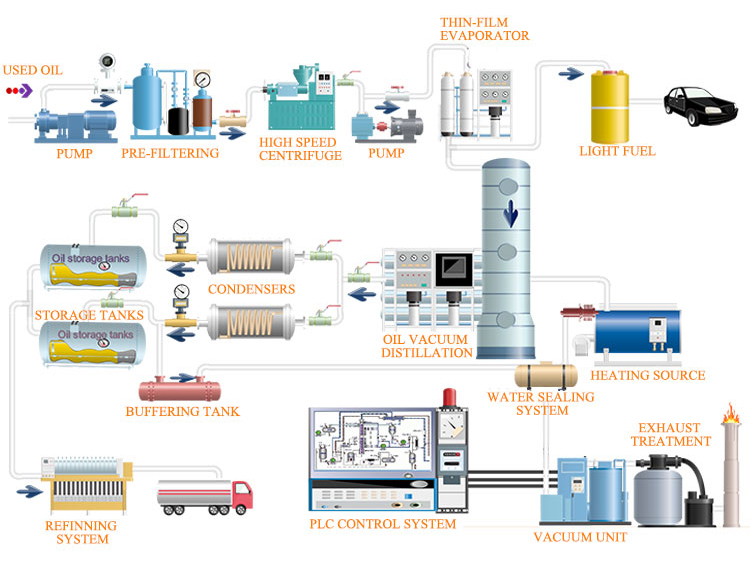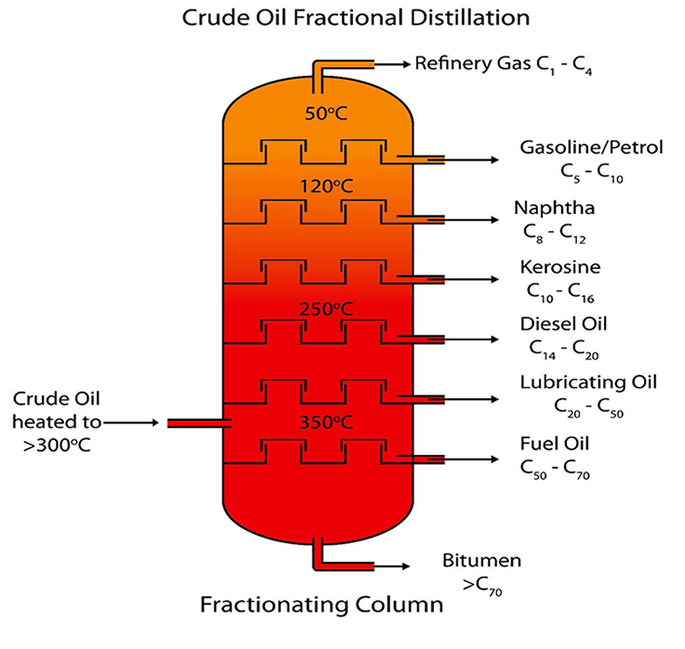Motor oil is widely used in machinery, chemical and other fields. After the oil is used, various impurities such as moisture, organic matter, pigments, and dust are mixed and often discarded. How to recycle these waste oils mixed with various impurities and recycle them? First, the regeneration principle According to the principle that the oil and water are insoluble and the boiling point of water is lower than the oil, the water can be removed by heating and standing. The organic matter is removed by the oxidizing property of concentrated H2SO4, and the activated carbon is used to adsorb the pigment, and mechanical impurities are removed by filtration, so that the purpose of oil regeneration can be achieved.
Second, the operation process oil regeneration generally goes through the following five steps:
Removal of water: After collecting the waste engine oil into the oil collection tank, it is placed in the refining pot, and after heating to 70-80 ℃, stop heating, let it stand for about 24 hours, drain the surface of the clear water, and then Slowly heat up to 120 ℃ (when the oil temperature is close to 100 ℃, heat slowly to prevent oil from boiling), so that the water evaporates, after about two hours, the oil does not turn, the oil surface can appear black oil and gas.
Pickling: After the oil is cooled to normal temperature, sulfuric acid is slowly added under stirring (concentration is about 92 to 98%), and the amount of acid is generally 5 to 7% of the amount of oil (depending on the degree of fouling of the oil). After the acid is added, stirring is continued for half an hour, and then left to stand for about 12 hours to drain the acid slag.
Alkaline washing: The acid-washed oil is re-warmed to 80 ℃, and soda ash (Na₂CO₃ ) is added under stirring. After stirring well, let it stand for 1 hour, then test it to neutrality with test paper, then let it stand. After 4 hours or more, the alkali residue is drained.
Activated clay adsorption: The oil is heated to 120-140 ℃, and the activated clay is added under constant temperature and stirring (the amount is about 3.5% of the oil). After the activated clay is added, stirring is continued for half an hour. It was allowed to stand at a constant temperature of ~120 ℃ overnight, and filtered hot on the next day.
Filtration: It can be filtered by oil filter, and it can be qualified after filtration. If there is no oil filter, the bag filter method can also be used. The above is the general operation process of purifying the oil, but it should be determined according to the actual situation. If there is little water containing impurities, the first step can be omitted; if the color of the oil is normal after acid-base treatment, it is not necessary to decolorize and adsorb with activated clay. )


